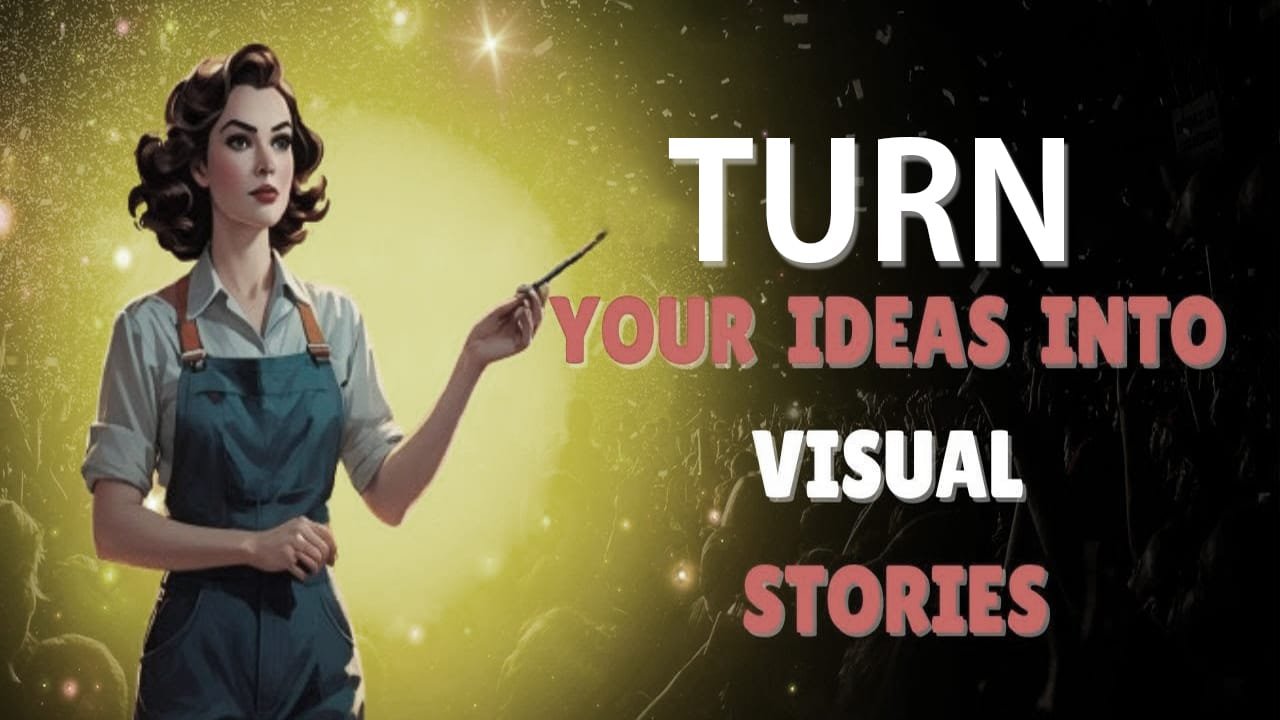In today’s digital age, storytelling has evolved beyond the written word. Visual content dominates the online world, engaging audiences in ways that text alone often cannot. Whether for marketing, education, or entertainment, video content is a powerful tool for communicating ideas. However, creating compelling video content traditionally required significant time, resources, and technical expertise. With the advent of AI technology, the process has been dramatically simplified. AI-driven tools are now enabling anyone, regardless of their technical skills, to turn text into engaging video stories effortlessly.
The Power of Visual Storytelling
Visual storytelling combines images, graphics, and video to convey a narrative. It taps into the brain’s natural affinity for visuals, making information more memorable and easier to process. Studies have shown that people retain up to 65% of information presented visually, compared to just 10% through text. This makes video an ideal medium for sharing ideas, whether you’re a marketer looking to engage customers, a teacher aiming to educate students, or a content creator seeking to entertain and inform your audience.
However, the barrier to entry for creating high-quality video content has traditionally been high. It required expensive equipment, specialized software, and a team of professionals to script, film, edit, and produce a video. This was a significant challenge for individuals or small businesses without the resources to invest in such processes.
AI: Revolutionizing Content Creation
AI has revolutionized content creation, breaking down these barriers and democratizing video production. AI text to video tools, in particular, have made it possible for anyone to create professional-looking videos from simple text inputs. These tools use advanced algorithms to analyze text, identify key themes and emotions, and then generate relevant visual content. The result is a video that aligns with the intended message, complete with appropriate visuals, animations, and even voiceovers.
The process is straightforward: you input your text, select your preferred style or theme, and let the AI do the rest. The AI reads the text, understands the context, and then searches for suitable images, clips, and soundtracks to match the narrative. It can also generate animations or visual effects to enhance the story. The final output is a cohesive video that effectively communicates the intended message.
How AI Text-to-Video Tools Work
AI text to video tools work by leveraging Natural Language Processing (NLP) and machine learning algorithms. NLP allows the AI to understand and interpret human language, analyzing the text to identify key concepts, emotions, and contexts. Machine learning enables the AI to learn from a vast database of visuals, sounds, and other multimedia elements, allowing it to select the most appropriate content for the video.
These tools often come with customizable templates, which users can adjust according to their needs. You can choose the length of the video, the type of visuals, and the tone of the narration. Some tools even allow you to select different languages or accents for voiceovers, making it easy to create content for a global audience.
One of the key advantages of using AI text to video tools is the speed at which you can create content. What used to take days or even weeks can now be done in a matter of minutes. This is particularly beneficial for businesses that need to produce content quickly to keep up with fast-paced marketing campaigns or respond to current events.
Applications of AI Text to Video Technology
AI text-to-video technology has a wide range of applications across various industries. Here are a few examples:
1. Marketing and Advertising
AI-powered video tools are transforming marketing and advertising. Brands can quickly create promotional videos, an explainer video, and social media content that resonates with their target audience. By turning product descriptions, blog posts, or even social media updates into engaging videos, businesses can capture attention and drive engagement.
2. Education and E-Learning
Educators can use AI text to video tools to create instructional videos, tutorials, and e-learning modules. By turning lesson plans or lecture notes into video content, teachers can provide students with a more engaging and interactive learning experience. This is particularly useful for remote learning environments, where video can help bridge the gap between teachers and students.
3. Content Creation and Entertainment
Content creators and entertainers can use AI tools to produce a variety of video content, from storytelling videos to animated series. Whether it’s turning a short story into an animated video or creating a video montage from a script, AI text-to-video tools enable creators to bring their ideas to life in a visually appealing way.
4. Internal Communications
Organizations can leverage AI-generated videos for internal communications. Whether it’s an HR update, a company announcement, or a training video, converting text-based content into video can make the information more engaging and easier to digest. This can lead to better employee engagement and improved communication within the organization.
Advantages of AI Text-to-Video Tools
Using AI text to video tools offers several benefits:
1. Cost-Effectiveness
Traditional video production is expensive, requiring a team of professionals, equipment, and software. AI tools significantly reduce these costs by automating the process and allowing users to create videos themselves.
2. Time Efficiency
What used to take days or weeks can now be accomplished in minutes. AI tools streamline the video creation process, enabling users to produce content quickly and efficiently.
3. Accessibility
These tools are user-friendly, often requiring no prior video editing experience. This makes video production accessible to a wider audience, including individuals and small businesses that previously couldn’t afford to create video content.
4. Customization
AI text to video tools offer a high degree of customization. Users can choose from various styles, themes, and voiceovers to create videos that align with their brand or personal preferences.
The Future of AI in Video Production
As AI technology continues to advance, the capabilities of AI text-to-video tools will only improve. Future developments may include more sophisticated content analysis, allowing for even more accurate and nuanced video creation. We may also see greater integration with other AI-driven tools, such as those for video editing, special effects, and distribution, creating a seamless end-to-end video production process.
Moreover, as AI becomes more adept at understanding human emotions and creativity, it could potentially take on more complex storytelling tasks, producing not just videos but full-length films, documentaries, and immersive virtual reality experiences. This could revolutionize the entertainment industry and open up new possibilities for how we create and consume content.
Conclusion
AI text to video tools are changing the landscape of video production, making it easier than ever to turn ideas into visual stories. By automating the process and reducing the need for technical expertise, these tools empower individuals and businesses to create engaging video content quickly and affordably. Whether you’re a marketer, educator, content creator, or business leader, AI-driven video tools offer a powerful way to communicate your message and connect with your audience.
As technology continues to evolve, we can expect even more exciting developments in the field of AI-driven content creation. For now, AI text-to-video tools provide an accessible and efficient way to bring your ideas to life in a visually compelling format, helping you stand out in an increasingly visual world.

I’m Emma Rose, the founder of tryhardguides.co.uk, and a content creator with a passion for writing across multiple niches—including health, lifestyle, tech, career, and personal development. I love turning complex ideas into relatable, easy-to-digest content that helps people learn, grow, and stay inspired. Whether I’m sharing practical tips or diving into thought-provoking topics, my goal is always to add real value and connect with readers on a deeper level.
Discover more from Try Hard Guides
Subscribe to get the latest posts sent to your email.

